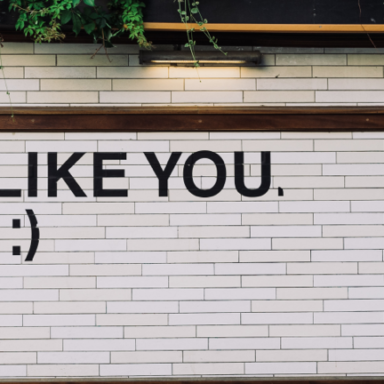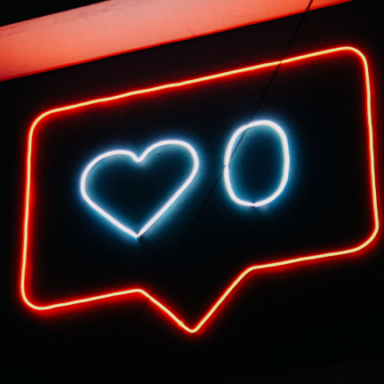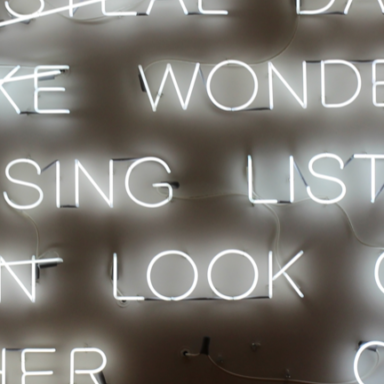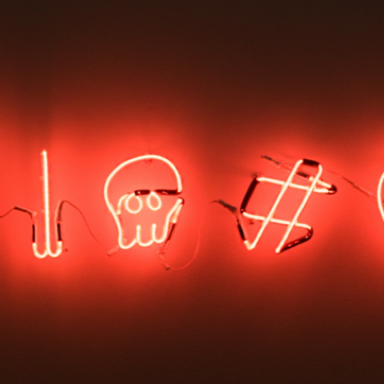Picking brand colors? Here’s how to achieve color happiness
Picking brand colors is an exciting job. But before you dive into it, you need to know exactly what your brand stands for.
That’s a topic for another time – but with those values in hand, you need to find colors to match.
Sounds easy, right? But how does it work? Well, thanks to associations born through instinct or repetition, different colors help us to communicate values and emotions. For example, shades of yellow can help evoke feelings of warmth and friendliness, while green often speaks to eco-friendliness.
These rules aren’t fixed, of course. Different cultures respond differently to certain shades (as we learned while designing Aetna’s vHealth app). But having a rough idea of what’s what helps to give us an idea of where to look within the color wheel.
Color’s a fantastic way of expressing yourself. As people, we pick the color of our clothing, the color of our hair, and the color of our homes. All of these give strangers a glimpse of what we’re like as a person, and what we’re into.
Having said that, first impressions with people can be totally wrong. For example, nobody has any idea of my penchant for heavy metal, since I don’t pick out the usual body modification, make-up, hairstyle and clothing associated with that genre.
With branding, though, there’s no room for second-guesses. Color’s something we can all relate to. Which means that when we design something, we know that it will speak to people in the same way.
There is of course one exception to the rule. Dogs. Color is wasted on them.
Picking brand colors you can ‘own’
The world of branding uses color to help create recognition and impact. That’s what we’re talking about when we say a brand ‘owns’ a color (or any other asset).
Which brands instantly spring to mind? Coca-Cola’s a good place to start. Its shade of red is inimitable – albeit ‘chosen’ accidentally. Then take Cadbury’s purple and Marie Curie’s yellow. They’ve all successfully managed to own distinctive colors by creating powerful brand associations. While other brands might focus more on developing unique typography to be their key point of differentiation.

But brands need to be reproduced by different people. On different mediums. In different places at different times. So the most important thing is consistency when it comes to your brand color.
The moment you lose consistency, you lose all the benefits of picking brand colors to represent you. The emotion, the associations, the expressions, become muddied. Imagine printing billboards that don’t match your website. Not good at all.
Avoiding common mistakes
Rule number one is to avoid picking colors only achievable by using Pantone inks. For the uninitiated, Pantone is a standardized color-matching system. Since it’s standardized, different manufacturers, designers, and printers around the globe can achieve the same colors without checking each others’ work constantly.

It’s a great system. It’s universal, its range is vast, and it’s constantly updated to improve its spectrum offering. I love Pantone. If anyone ever wonders where the Pantone swatch book is currently sitting in the office, your best bet is generally going to be on my desk.
It’s fair to say I’m a Pantone obsessive; I know all their songs, I know where they live. And if I don’t get my Pantone fix at least once a day, bad things happen.
Pantone’s amazing (if it’s in your budget)
The benefits come at a price. Cost. Pantone colors are much more expensive to print. Just like side orders in a posh French restaurant, printers charge you per color. Because of this, we only suggest using purely Pantone when and where the budget allows.
Another reason to avoid only picking the super bright vivid tones within the swatch book is color reproduction. Sometimes, you can’t use the tones for things like pull-up banners and wall vinyls, so you need to use the CMYK equivalent. Luckily, Pantone swatch books have done the hard work for us, and suggest the closest matching CMYK breakdown for every color.
But I said ‘closest matching’, not ‘identical’. If you happen to have a swatch book close to hand, have a flick through it and you’ll see how some colors translate effortlessly, whilst others fail miserably.
Imagine the mismatch of printing your business cards in a shocking Pantone neon pink, and your pull-up banners in a wishy-washy salmon. Nightmare!
The second mistake to avoid is picking a color breakdown in programs like Adobe Illustrator, or picking a color from a website or a document you’ve scanned, as the values might not be on the money.
The problem with this is that when it comes to putting brand guidelines together, Pantone references are generally the starting point. If you didn’t start with a Pantone, it becomes a challenge to convert the CMYK figures to an accurate approximation. It’s essentially doing the job in reverse and brings up a whole world of consistency challenges.
Three simple rules to picking brand colors
- Choose a color from a swatch book (not from a screen, not color-picked from a website, and definitely not from a photo you took of a wallpaper that caught your eye).
- Make sure it has similar outputs across Pantone, CMYK, and RGB to give you the most flexibility when it comes to producing, printing, and polishing.
- And if Pantone is simply a no-go, don’t be afraid to stick to the traditional outputs. Happy client, happy boss, and best of all, happy you.
Right, time for a coffee.
Umm, OK, who the hell’s hidden my Pantone mug…















